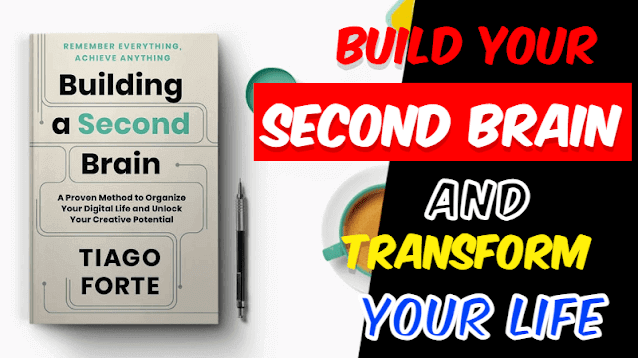Introduction
If you're someone who loves to save information for later use but often forgets about it, or if you struggle with information overload and the resulting stress and anxiety, then this blog is for you. In this blog, we will explore the concept of building a second brain as a solution to these problems.
Tiago's Story
Tiago used to lead a happy and optimistic life. However, in 2007, he started experiencing severe neck pain that turned into a burning sensation. Despite visiting numerous doctors and specialists, no one could find the cause of his pain. Finally, Tiago met a neurologist who prescribed a medicine that numbed his nervous system, providing relief from the pain. Unfortunately, the medicine had side effects, including severe short-term memory loss.
The Solution: Building a Second Brain
To cope with his memory loss and to better manage information overload, Tiago developed a system called the "second brain." This system involves capturing and organizing important information to create a reliable and easily accessible resource.
Step 1: Capturing
A key aspect of building a second brain is capturing important ideas and information. Our brains are not designed to store every idea we come across, so it's essential to write things down. Tiago recommends using the SHIPI method for capturing ideas:
- Surprising: Write down anything that surprises you.
- Helpful: Capture information that you find helpful.
- Inspiring: Jot down anything that inspires you.
- Personal: Record personal thoughts and reflections.
- Imaginative: Write down anything that triggers your imagination.
By following this method, you can ensure that you capture valuable insights and ideas for future reference.
Step 2: Organizing
Once you have captured the information, the next step is to organize it effectively. Tiago suggests using the PARA method:
- Projects: Create a folder for projects with a clear end-goal.
- Areas: Organize information related to long-term areas of focus.
- Resources: Store books, references, and other resources that can aid your development.
- Archives: Keep miscellaneous items that don't fit into the other categories.
By organizing your captured information in this way, you can easily access and utilize it when needed.
Conclusion
Building a second brain is a powerful method for managing information overload and improving memory retention. By capturing and organizing important ideas, you can create a reliable and efficient system that saves you time and reduces stress. Remember, your mind is for having ideas, not holding them. So start building your second brain today and unlock the full potential of your knowledge and creativity.

